Last Tuesday, I played a preview build of this spring’s Assassin’s Creed Valhalla for three hours by streaming it directly from one of Ubisoft’s computers. That’s how Ubisoft is doing E3-style previews this year. It’s useful. Three hours is a lot of time to spend with a game that’s not even out yet, but it’s also barely enough to scratch the surface of the sprawling open world role-playing games modern Assassin’s Creeds have become.
The opportunity was promising. Valhalla is a sprawling Viking adventure that’s been in development for a few years. It had only been shown in a slick launch trailer, some underwhelming sort-of-gameplay footage during an Xbox showcase in May and then through some leaks in the past week. Plus, the game was newsworthy. All of Ubisoft is right now. Valhalla lost its creative director, Ashraf Ismail, late last month after he decided to step down to deal with “personal issues” after public allegations that he lied about being married and tried to leverage his status in the games industry to engage in affairs.
[referenced url=”https://www.kotaku.com.au/2020/07/ubisoft-says-it-wont-address-misconduct-issues-during-todays-digital-showcase/” thumb=”https://www.gizmodo.com.au/wp-content/uploads/sites/3/2020/07/13/grdrcxrh07vxgzp5xi9q-300×169.png” title=”Ubisoft Says It Won’t Address Misconduct Issues During Today’s Digital Showcase” excerpt=”Ubisoft’s big gaming showcase event today will be full of hype for upcoming Assassin’s Creed and Far Cry releases, but it won’t mention the stream of allegations, resignations and overall upheaval happening as a result of weeks of reports about sexual misconduct across many parts of the publisher.”]
Since then, many others have stepped down from their roles at Ubisoft amid allegations of systemic misconduct at the company, including most recently Serge Hascoët, previously the company’s star chief creative officer responsible for overseeing the evolution of all its franchises, as well as Yannis Mallat, previously the head of Ubisoft’s Canadian studios, including the Quebec office which is leading development on Valhalla.
The demo turned out to be an impressive tour of Ubisoft’s latest video game world, but the experience was also very limited. It was more difficult than I expected to learn a lot about the soon-to-be released blockbuster. The person running the demo wasn’t involved with the development of the game and didn’t (or at least claimed not to) know anything about Valhalla outside of what existed in the demo.
Not having a developer on the game to guide me through the demo meant I couldn’t ask them questions about Ubisoft’s recent #MeToo reckoning, or specifically about Ismail’s departure. It also meant I came away from my time with Valhalla with a good feel for how the game plays but lots of granular questions about all of the complex, interweaving systems at work. In an interview with us the month prior to stepping down, Ismail played up the traditional elements of Assassin’s Creed that will be returning like insta-kills and social stealth, but I didn’t get a clear picture of how they would work from my time in the demo, and instead came away feeling like Valhalla was an open world viking RPG that was an Assassin’s Creed seemingly in name only.
Much has also been made of the game’s size, with seemingly contradictory messaging from different wings of the Ubisoft communications empire on whether Valhalla is bigger than the sprawling 200-hour 2018 Assassin’s Creed Odyssey or not. While Valhalla felt more focused than Odyssey during the time I spent with it, its scale was still overwhelming. And when I would sit down and try to think of what to play in my free time in the days following the demo, my mind continually turned to “that viking RPG” my time with which had felt both vaguely familiar and still incredibly satisfying.
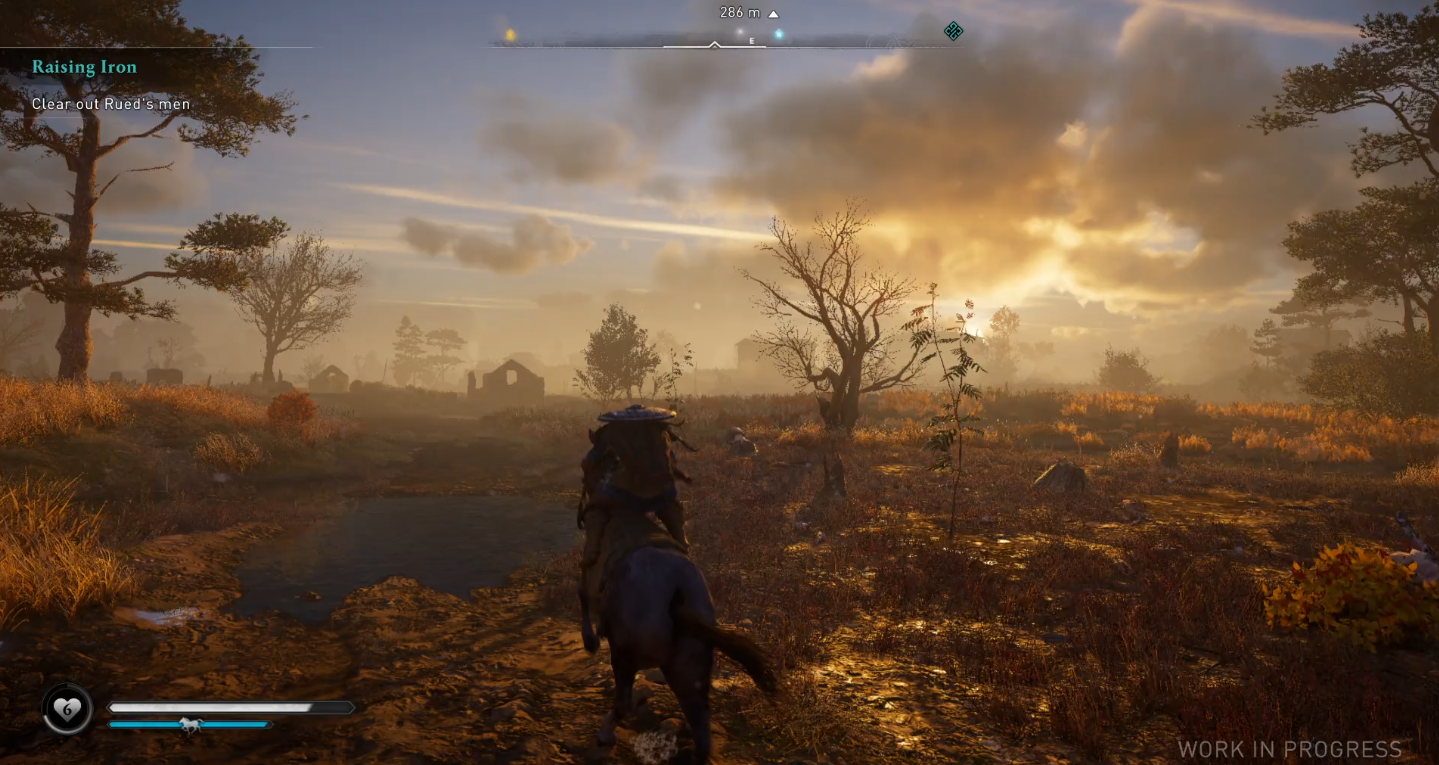
Modern Ubisoft games, Assassin’s Creeds included, can feel like glorified checklists, but Vahalla’s unchecked boxes were ones my mind kept turning back to. While nothing in the demo completely wowed me, I’m still eager to tick off more of those boxes when the game comes to current and next-gen consoles later this year (PS4, PS5, Xbox One, Xbox Series X, PC).
You can swap back and forth between the male and female versions of Eivor, seemingly at will. I played most of the demo as the female Eivor. Toward the end of my session I noticed an option to press up on the D-pad while toggling between menus. Doing so let me interface with the Animus and start playing as the male Eivor moments later, complete with new animations and a different voice. The whole thing was seamless, at least in the demo.
Character levels are gone, sort of, and in their place is power. You still collect experience points while playing Valhalla, as you can in recent Assassin’s Creed games. And every so often you’ll get enough to earn a new skill point, but you don’t have a level per se, at least not one that appears on your character’s stat screen. Instead you have a number called power which is made up of the total number of nodes you’ve unlocked in the game’s skill tree, each of which grants a bonus like higher maximum health or increased damage from ranged attacks.
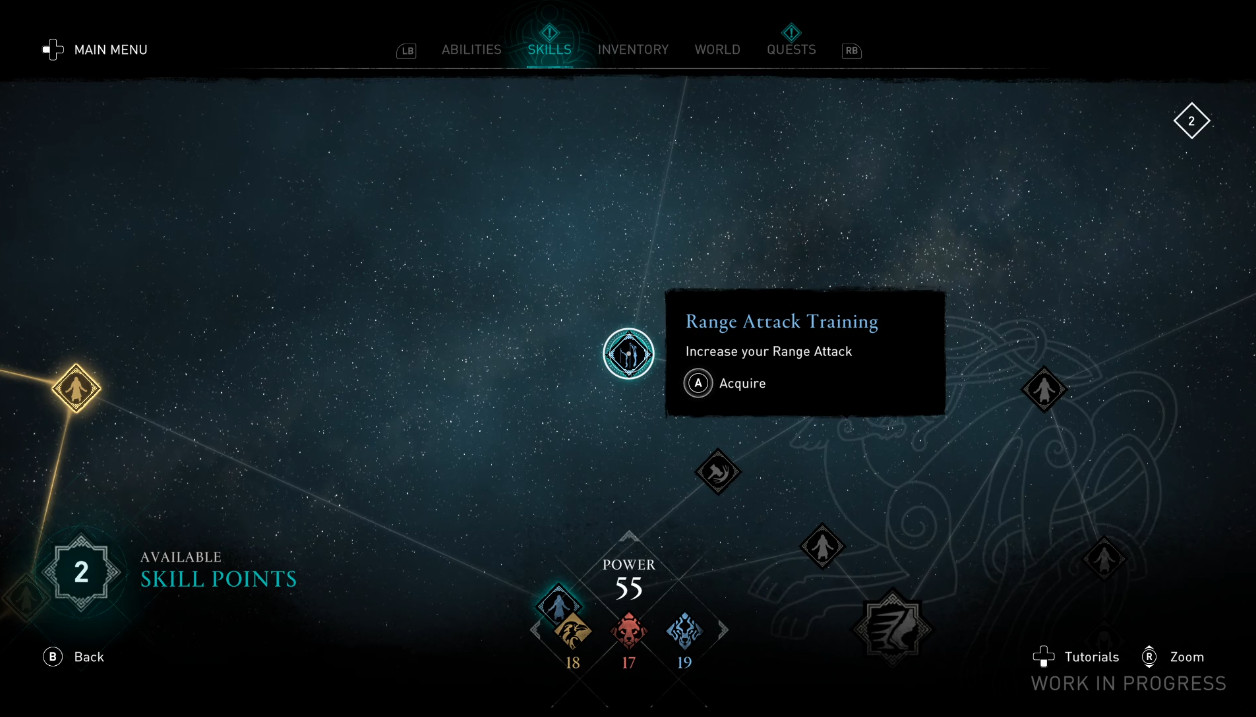
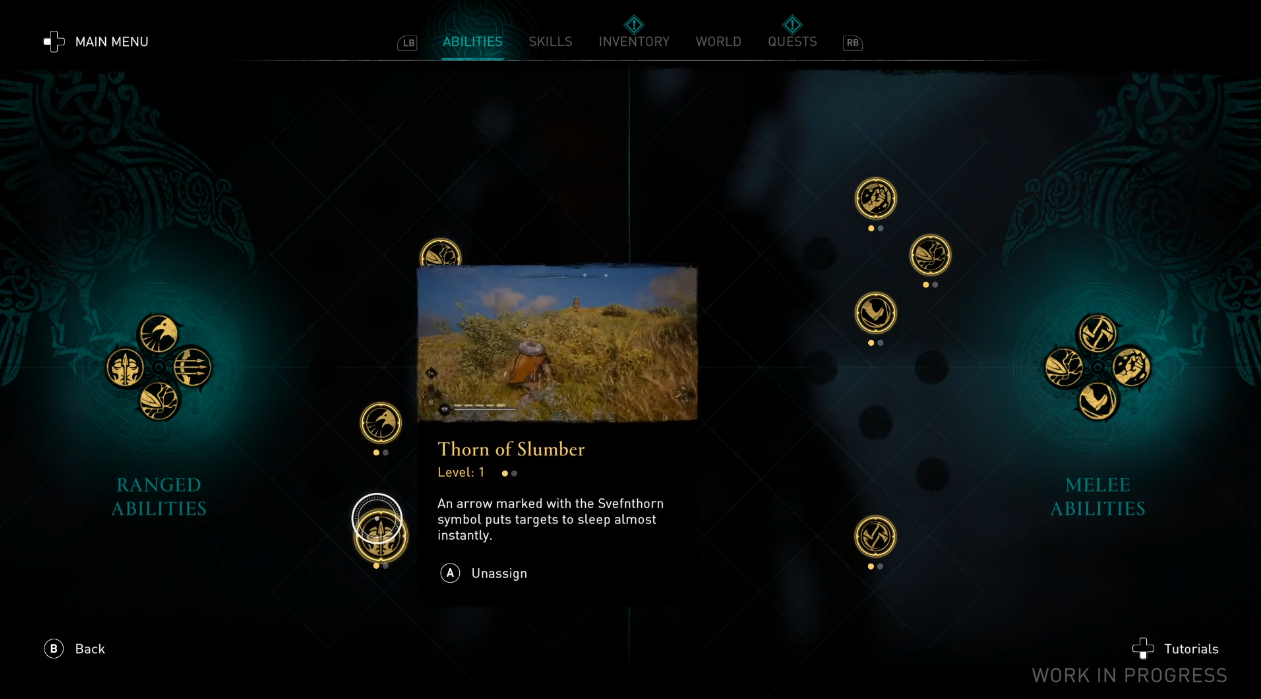
There are now two skill trees. One is specifically for special abilities, like Odyssey’s returning Spartan kick. That one requires finding special books out in the world in order to progress through. The other is for increasing general stats and gaining small upgrades, such as automatically doing damage after successfully parrying an attack. In addition to needing to collect experience points to progress through this second skill tree, it’s also broken down into three sub-trees, each based around a particular animal. The bear sub-tree focuses on brute force fighting, while the raven tree is all about being sneaky. Meanwhile the wolf sub-tree focuses on hunter-like upgrades like being more effective with your bow and arrow.
Gear corresponds to one of these skill sub-trees. Weapons associated with the bear, for instance, will be more effective the more nodes in that skill sub-tree you have unlocked. Under this new system, you really need to pay attention and think about how you’re upgrading your gear and skills to fully maximise their effectiveness. While this takes Valhalla even further down the RPG rabbit hole, it also makes it feel like there are more ways to customise your character. I also didn’t see any clear indicators of rarity, with gear instead colour-coded according to the sub-classes mentioned above. The game’s former director has also said that any piece of gear can be fully upgraded to remain relevant throughout the entirety of the game rather than needing to be replaced by more rare stuff.
You can dual-wield certain weapons. At one point during my demo I decided to swap out my shield, which players didn’t have access to in Odyssey, for a second ax. I was able to get more swings off this way, furiously chopping away at enemies instead of bobbing and weaving as I had when I was outfitted more defensively. More effective, though, was swapping in a different type of weapon, say, a morning star, in the secondary slot. Definitely not the assassin’s way, but it helped make large scale battles feel a bit less repetitive. (Update – 3:48 p.m, 7/12/20: while not available in the demo, according to Valhalla’s gameplay trailer any combination of weapons, including shields, can be dual-wielded).
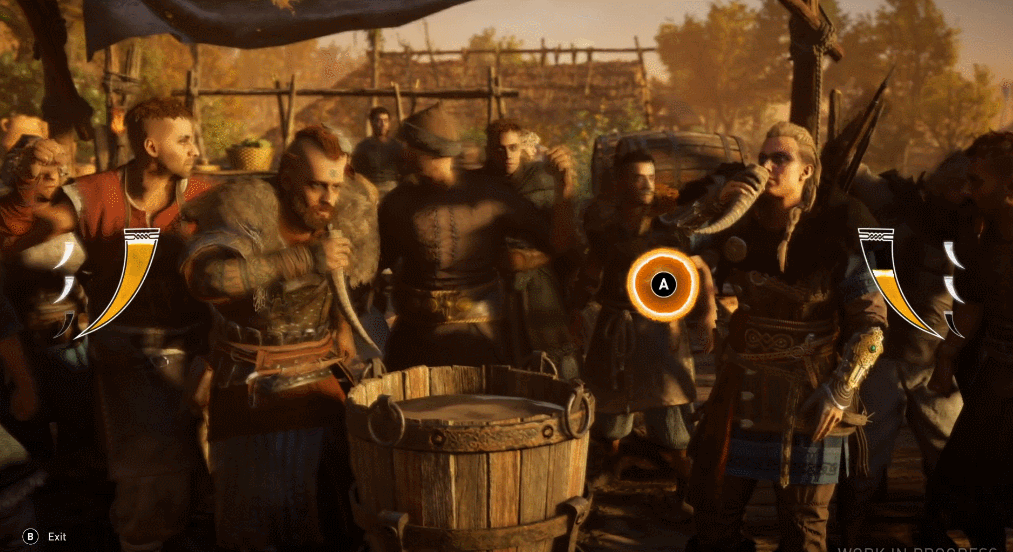
And get drunk.
The longship is smaller but can also ferry allied troops around to help you raid enemy hideouts. Early on I went to a small fort and took out a couple of dozen guards and an elite enemy who functioned like a miniboss. It was challenging, but I managed. The demoist with me pointed out that if I’d taken my longship there, instead, my crew would have gotten out and helped me in the battle. The longship isn’t as big as the boats in earlier AC games. That smaller size lets it manoeuvre in-land up rivers. At the same time, I didn’t encounter any rival longships to battle out in the water while exploring the coast, so I’m not what the status of ship-to-ship combat will be.
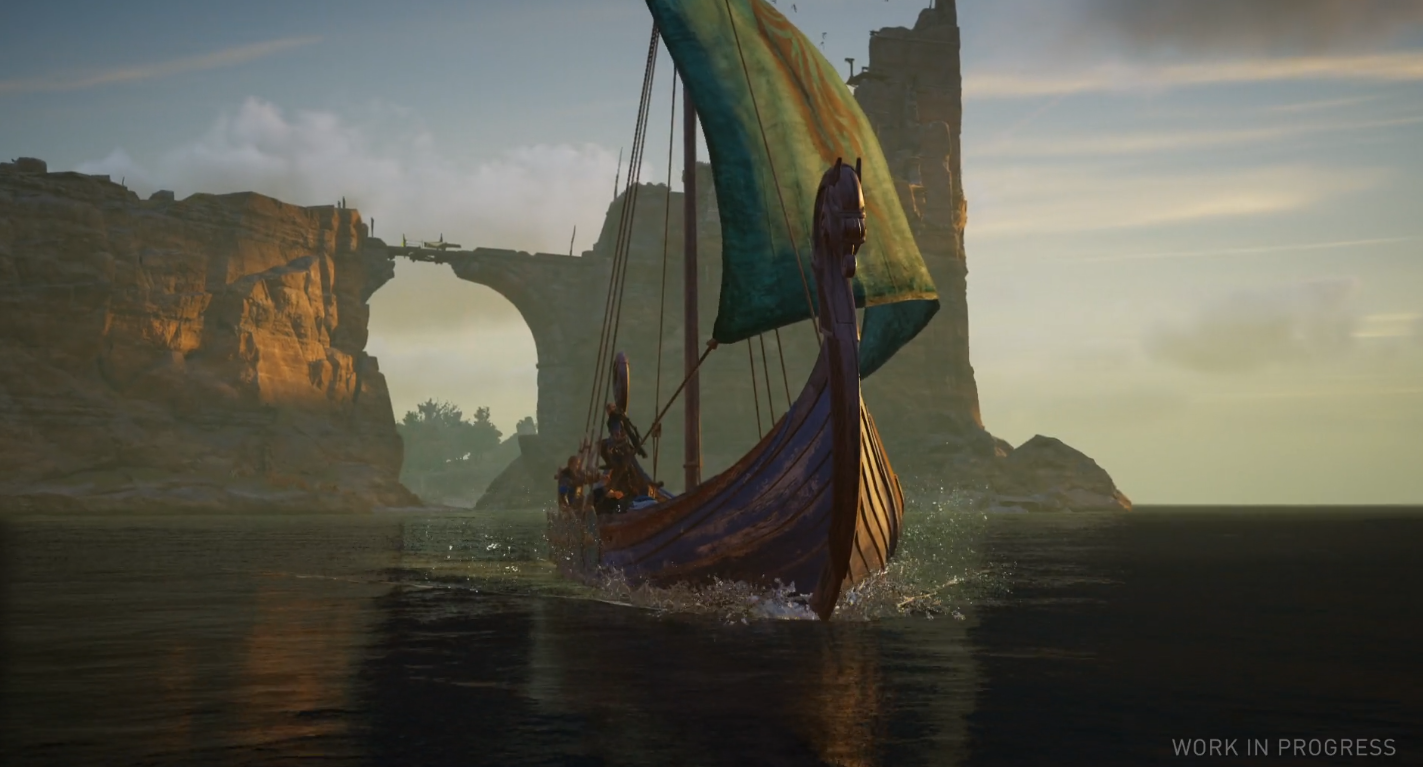
A new cinematic mode for horseback riding and seafaring shows off Valhalla’s beauty. When travelling you now have the option of engaging a cinematic view where the camera cuts back and pans around to make it easier to take in the sights. I found it worked especially well for the longship, and also complemented the new option to have your boat auto-navigate to objective markers. Additionally, you can make your crew sing songs or tell stories about their past adventures during these journeys.
Fishing returns. You can bring up an activity wheel with the D-pad and one of the things it includes is fishing. If you’re near water you can have Eivor throw a rope with some bait attached into the water, wait for something to bite, and then try to reel it in. Force the line too much and it’ll break. Allow too much slack and the fish will get away. It’s much more chill than Black Flag’s spear fishing hunts, plus you can eat your catch to regain health or save it for later.
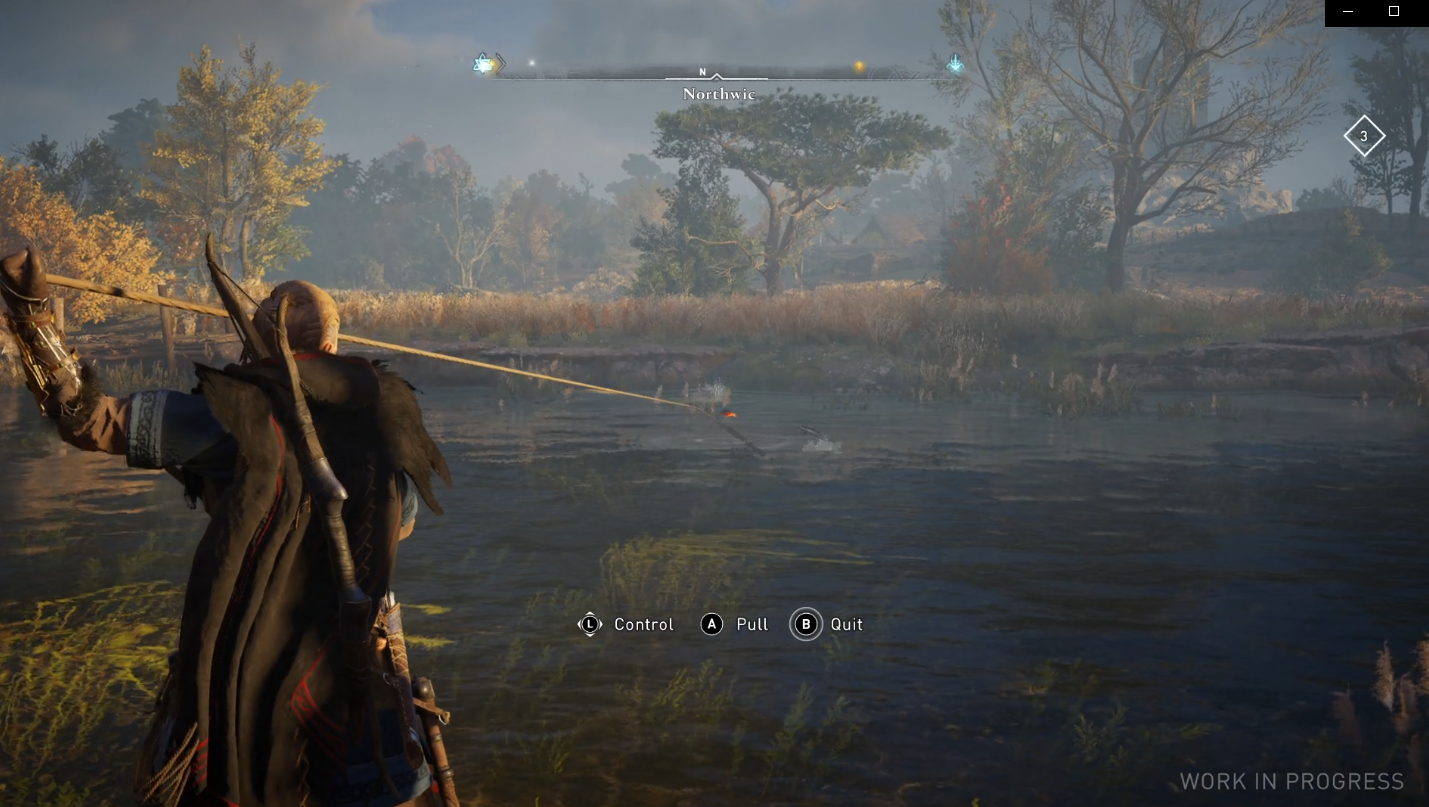
Health regeneration is based around food rations. Valhalla’s world is full of food to hunt and forage, and you can eat it to regain your health. I was able to store up to seven rations at a time, with each one refilling a chunk of my health bar when called upon. My demoist would encourage me to stock up on rations before tough fights or big battles, although every enemy encounter also seemed to have a fair number of mushrooms and berries to pick nearby, leading to weird interruptions in the flow of combat when I would be running low on health and run away to go forage in the bushes.
There’s a charisma stat. At one point during my demo I had to deliver a speech to help rally my troops for a castle siege. I was able to assemble the speech using dialogue options. Later, I held a verbal duel with someone in one of the villages as part of a new dialogue-based mini-game. He’d hurl insults at me, and I’d need to choose the wittiest retort. After winning one of these speech-offs my charisma stat increased from one to two. I have no idea what that does, and my demoist didn’t either, but, as someone who always tries to max out their charisma stat in Bethesda RPGs, seeing it got me excited. It felt like an evolution of some of the verbal sparring with Sokrates contained in Odyssey.
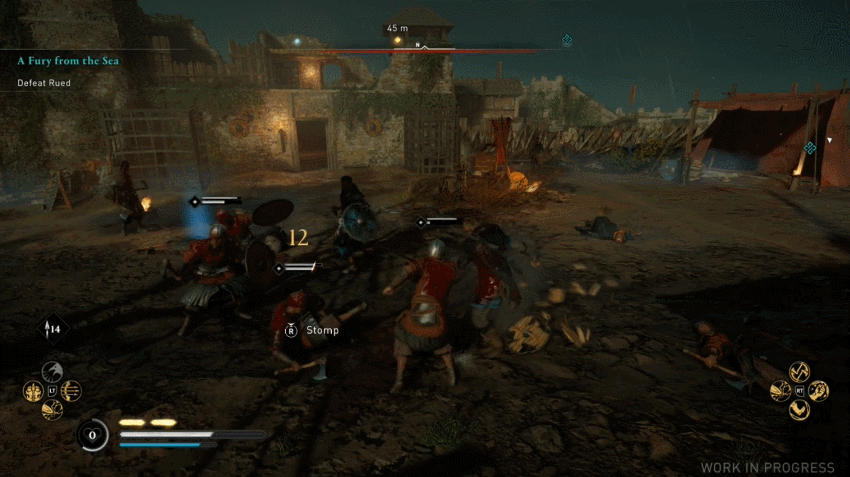
A new fighting ability lets you charge enemies and ram them into stuff. And it’s a ton of fun. That’s it. That’s the bullet point.
If you can’t insta-kill bosses you can at least get the jump on some of them. In an interview with Kotaku Ismail said Eivor would have access to a hidden blade and as a result, insta-kills, but I’m still not sure exactly how that will work. I was able to insta-kill the first enemy I saw during my demo by sneaking up on them, and with the new power system there’s seemingly no way to be “under-leveled” for an enemy (which in the past two games meant a stealth assination would only take away part of their health). But it wasn’t clear that I could insta-kill bosses. When I tried to eagle dive onto one of them during a castle siege, a quick time event began where I needed to press a button at the right moment as a circle on the screen quickly shrunk. I missed the window and knocked him to the ground without doing any damage.
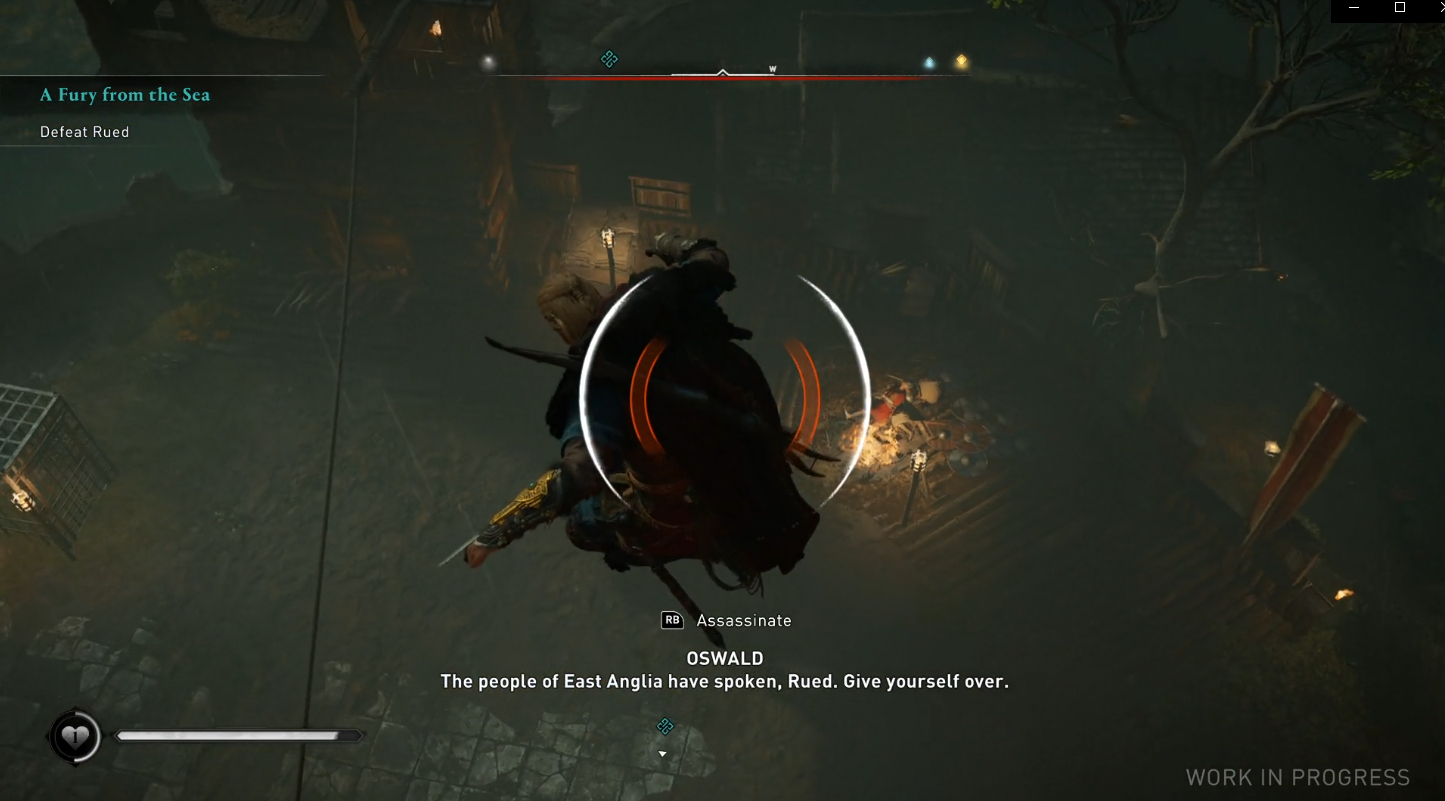
Social stealth is back but I didn’t get a chance to try it. Evior can throw her hood up whenever she pleases to help her blend into a crowd, despite being an extremely tall Dane in a foreign land. This is supposed to help her escape detection in hostile towns, but I didn’t get the chance to test this out for myself as every one I visited appeared to be friendly to me and my clan.
Killing random townsfolk will desynchronize you. One of my favourite parts of Odyssey was the involved bounty system where elite warriors would hunt you down if you killed too many people in a particular area, including random non-player characters just trying to eek out a living in the chaotic world of a violent video game. Valhalla doesn’t appear to have anything like that. Instead, killing randos simply messes up your connection to the Animus and eventually leads to a game over.
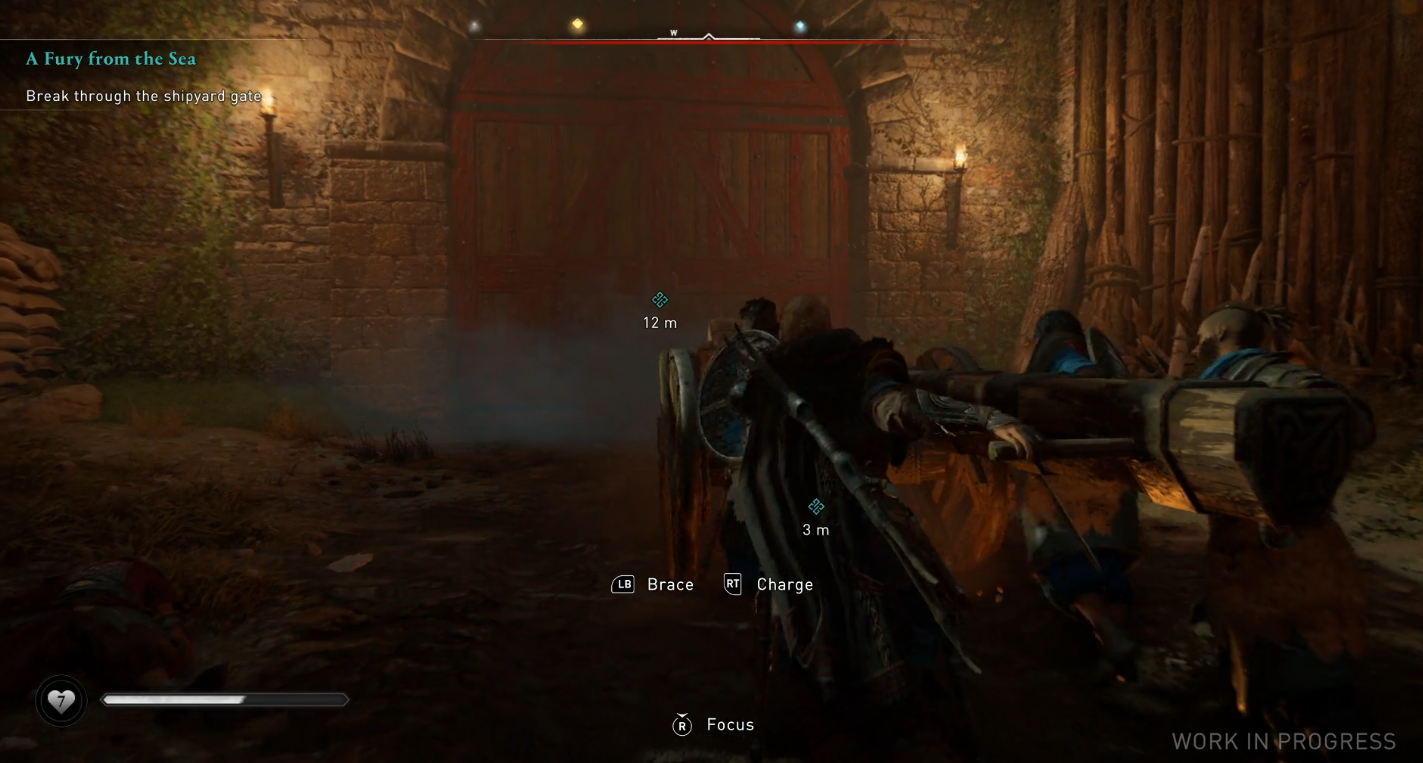
There are castle sieges. Instead of Odyssey’s ground battles Valhalla’s main action set pieces appear to revolve around raiding forts and castles. This requires escorting a piece of siege equipment to break through a successive series of gates while taking out archers and beating back waves of attackers on the ground. It reminded me a lot of For Honour, Ubisoft’s medieval fighting game which got its own Siege mode a couple years ago. Valhalla’s version is understandably a bit less complex and varied, but was still a lot of fun the first and only time I did it during the demo. I’m less convinced it will feel as fun or varied enough dozens of hours into the game.
Valhalla has seals. And they look lovely.
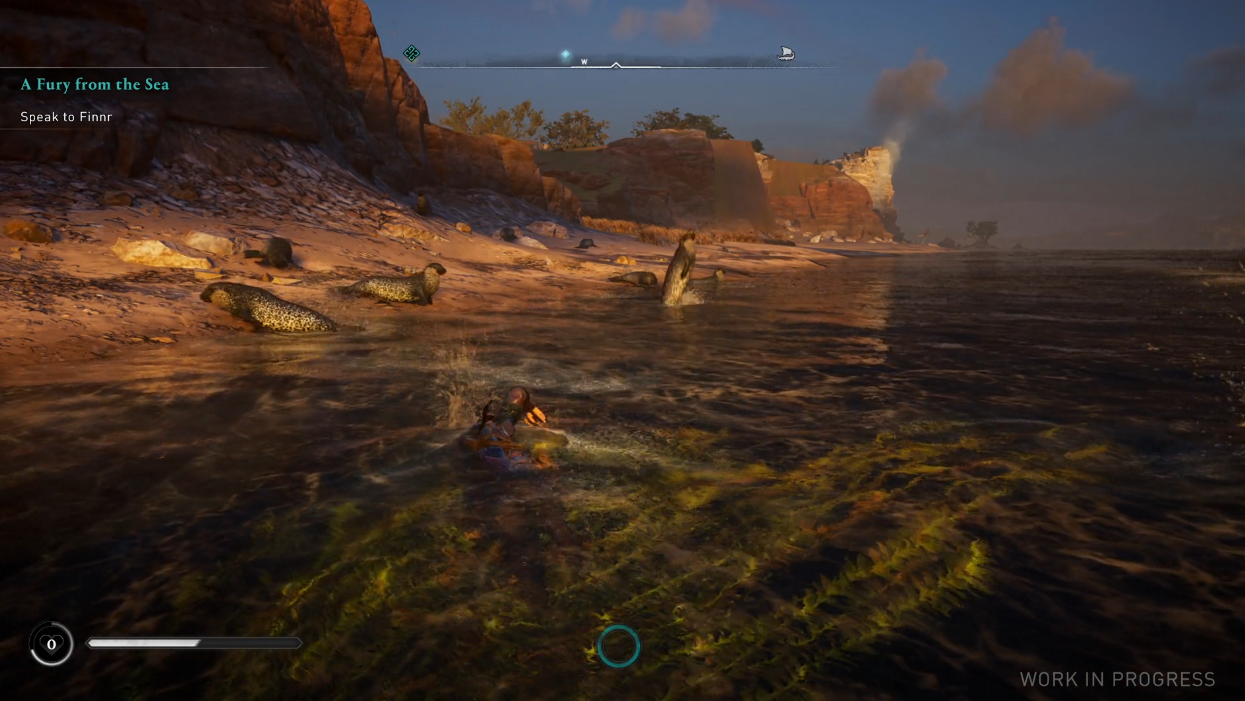
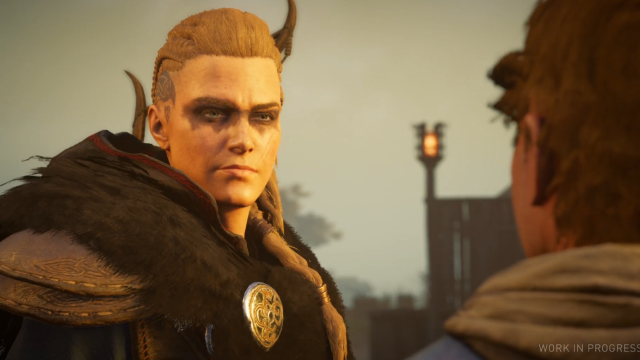
Comments
13 responses to “Everything We Learned About Assassin’s Creed Valhalla After Playing It”
Having not played an AC game since the first one (for about 1 hour and I hated it) I purchased AC Odyssey because it looked like an modern improvement. Boy was I wrong.
The menu system used a cursor (?!?) and was the most unintuitive I’ve seen in ages. Same goes for the map/markers. Easily the worst of these systems I’ve seen in an open world game. It was downright confusing.
The frequent and boring dialogue/cut scenes were nauseating and the load times…. oh my god the load times before and after EVERY piece of dialogue.
The combat was ‘ok’ but compared to action game with truly great combat combat controls like HZD or Dark Souls it’s just embarrassingly simple and button mashy.
But hey the graphics were nice…
I am gobsmacked that these games sell like they do and consistently get fawned over by critics seemingly just because they are sprawling and expensive looking…
It’s just different tastes.
Just like music and movies.
I love the AC games.
Each to their own, I felt the first three or so were dreadful, for me. But I could see what others saw in them. I have been enjoying them since like Black Flag, but the last two were finally the game I wanted to play. They aren’t perfect but the things they do well, really shine for me.
Ever stopped to considered they are actually good games that you simply do not understand the appeal? That doesn’t make them bad.
Yep, black flag a clear standout and the last 2 were simply brilliant. This looks like its ticking all the right boxes as well. vikings!
I still don’t get how they’re gonna reconcile that you’re the hostile invader, killing locals and pillaging towns with being the ‘good guy’?
That’s been the plot of most of the Far Cry’s…
Because history isn’t as simply as we were taught. We need to think about it from their point of view, with their morality of the time. Yes they did some of that stuff but not as we grew up believing from movies.
But yeah that is intriguing me how they are going to marry those ideas and motivations . If we are going to have choices to not partake etc.
Most video games involve you going places and killing lots of things, picking up everything that isn’t nailed down and basically doing whatever you want because you’re the “hero”. Even Mario has racked up an insanely high body count over his adventures. What has Bowser done? Kidnap a princess.
Basically you’re the good guy as long as you claim your actions are righteous and just.
“Later, I held a verbal duel with someone in one of the villages as part of a new dialogue-based mini-game.”
Insult Sword Fighting?
I’m In
“Not having a developer on the game to guide me through the demo meant I couldn’t ask them questions about Ubisoft’s recent #MeToo reckoning, or specifically about Ismail’s departure.”
Good. You were invited to playtest the game, not go all A Current Affair about background business issues.
The above is well-written and informative on what we want to know about the game itself. If some poor developer had been there, the article would have lost its focus and purpose.
” Not having a developer on the game to guide me through the demo meant I couldn’t ask them questions about Ubisoft’s recent #MeToo reckoning, or specifically about Ismail’s departure. ”
Statements like this are probably why they didn’t want to talk to you or Nathan. They are there to promote the game, They aren’t there so you can bait them into gotcha statements.
After watching some YouTube gameplay, if you succeed in the quick time event you do one shot your targets.
I’m looking forward to it, but I’m getting huge RDR2 vibes from everything I’ve seen so far.